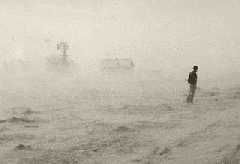Windfuels: A Practical Approach to the Climate Change Threat
2GreenEnergy supporter Dr. David Doty wrote to update me on his progress in raising the capital for his Windfuels project, and notes:
In the meantime, keep doing what you’re doing – trying to increase public awareness of the need to do much more to avert a climate disaster by mid-century, which at this point actually seems unavoidable for political reasons. See this article on “Dust-Bowlification,” as reported in Nature here:
Thanks for this. I agree with your analysis of the short-term political and economic events that have conspired to make things tough. But looking at this one way, it’s actually good news that Windfuels is still an open opportunity for an investor with vision. Yes, I’ll continue to help tell your story, and raise awareness of the threat of climate change. It’s hard to believe that we live in a country in which this is necessary, but that seems to be the case.
I hope readers will check out the article that you’ve provided above.


There has been a difficulty in presenting the threat of desertification. This has always been a part of the models, but it’s rarely mentioned these days, and even more rarely considered a valid concern. (This will be one of the more expensive accommodation costs associated with AGW).
I think the biggest problem in communicating the threat revolves around word choice: Drought.
The typical definition of the word is simply:
1. a period of dry weather, especially a long one that is injurious to crops.
So people look at rainfall patterns to see if the climate seems to fall in line with the prediction of “drought”… and that hasn’t been happening. The arctic ice is melting, the temperatures are rising, storm fronts have more energy, etc… but there doesn’t seem to be an increase in the instance of “drought” as it’s understood.
However, the issue isn’t purely one of rainfall. If the average temperature over the course of the year is 5 degrees C higher, then the average vapor pressure of water will be ~25% higher, so you have much faster evaporation from the soil ALL YEAR LONG. That means less hydration for plants, lower creek, river, and lake levels, etc… even when rainfall increases – so long as the increase in rainfall is less than the increase in vapor pressure of water.
So the land dries out even as rainfall levels stay the same or increase, but people aren’t focusing on the issue because they haven’t seen a gradual reduction in rainfall – in the same way that they can see a gradual increase in the melt rate of the Greenland ice shelf.
The “early warning” trends are not nearly as evident here, because people are watching for the wrong early warning.